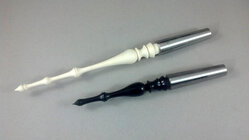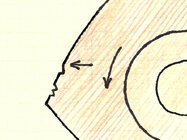I started turning in 2020, right as the pandemic started. Purchased my first lathe (sadly a Nova 14DR, very new at the time, was a disaster!!) in early February, but wasn't able to get all the necessary tools (i.e. chucks, right jaws, etc.) to start turning bowls, which is what I started with, until about April. Started turning a lot in April, and applied things I'd learned watching lots of turning videos over the prior year or so. There have been a number of simple little tips, sayings, that have helped me turn well, and I thought it would be interesting to have a thread where everyone could share their little gems.
Here are a few that have helped me:
* Cutting > Scraping > Sanding
* Let the wood come to the tool
* Faster cuts cleaner
* Sharpen often, cut clean
* Let the (sanding) grit do the work
* Spin the blank fast enough to minimize "air gap time" (initial shaping, square/polygonal/odd shapes, etc.)
* Safety is first and foremost a choice, choose to BE safe first!
Here are a few that have helped me:
* Cutting > Scraping > Sanding
* Let the wood come to the tool
* Faster cuts cleaner
* Sharpen often, cut clean
* Let the (sanding) grit do the work
* Spin the blank fast enough to minimize "air gap time" (initial shaping, square/polygonal/odd shapes, etc.)
* Safety is first and foremost a choice, choose to BE safe first!


